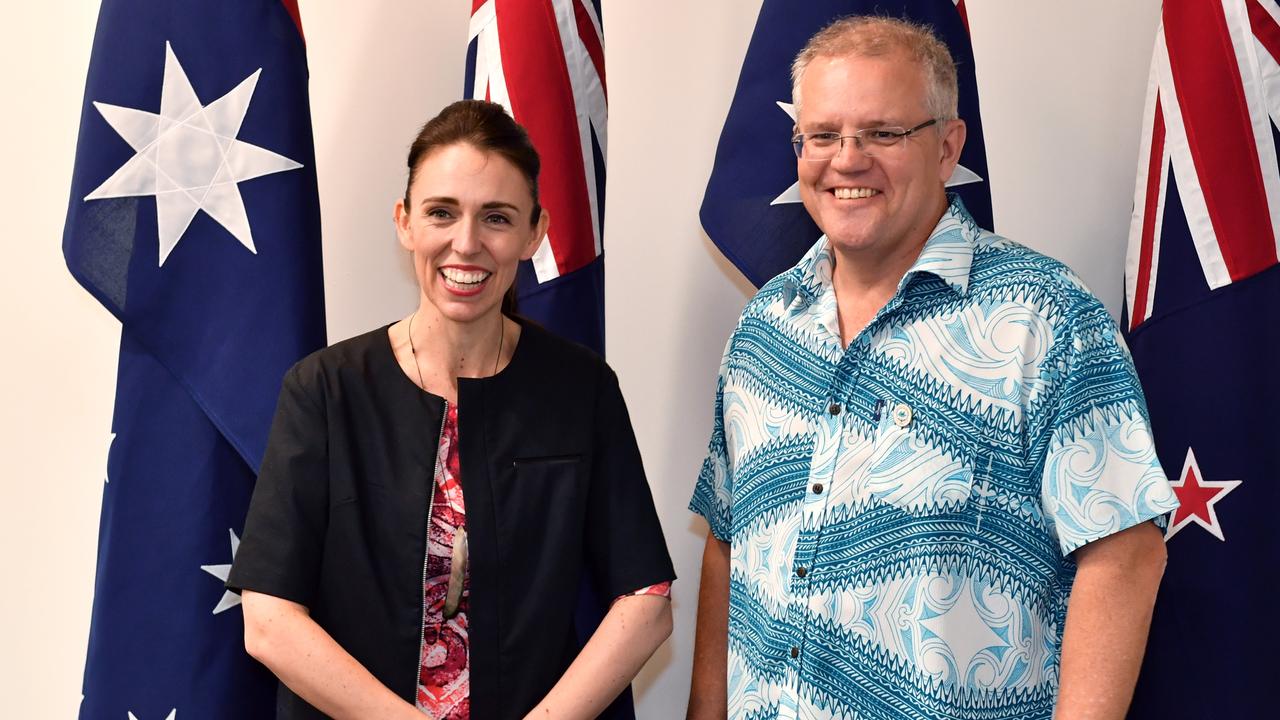Let’s stop chasing the dragon’s tail

AUSTRALIA’S bountiful resources helped deliver tremendous prosperity in the 21st century, just as they did through much of the 19th century. In both periods Australia was lifted to the top of the global income ladder by buoyant commodity prices, a flexible economy and good governance. In both periods the question has been asked: how do we maintain our prosperity when the boom times end?
The economics profession has clear insights to help countries manage their resources wealth for the long-term benefit of their people. The first insight is that resources need to be actively managed. Their mere existence doesn’t guarantee prosperity; in fact, the discovery of resources often brings as much pain as gain.
Diamonds brought perpetual war to Liberia, Sierra Leone, Cote d’Ivoire and Congo; oil brought corruption and stagnation to the economies of Venezuela, Nigeria and other petroleum producers.
The observation that many of the world’s most resources-abundant countries are also among the poorest is known as the “resource curse”. In 1995 Jeffrey Sachs and Andrew Warner investigated the resource curse using data for more than 70 countries across an 18-year period. They found resources-abundant countries exhibited worse economic performance, on average, than countries without natural resources. This finding seems counterintuitive: why would resources-rich countries be poorer, on average, than countries without resources?
The curse was explained in the 1980s by Max Corden, one of Australia’s most renowned economists. Corden showed that when a country’s resources sector is booming, it can do long-term harm to other sectors of the economy. When the resources boom ends, the country has little to fall back on. In Corden’s research this damage, which he called “Dutch disease”, occurs for two reasons.
First, a booming resources sector monopolises scarce capital and skilled workers. The other sectors shrink as workers and funding leave to join the boom. This is called the “capability movement effect” because the economy’s production capability (workers and capital) moves from one sector to another. We saw this effect at work in Cairns, for example, when a restaurateur lost his chef to the mines and had to close his restaurant on Monday and Tuesday nights. We saw it in the Cairns tourism industry, which may suffer in the long term if investments are not made to renew and develop transport and accommodation.
Second, a booming resources sector harms other sectors by reducing their competitiveness. The resources boom brings extra wealth into the economy, pushing up the price of everything from haircuts to restaurant meals. But this “spending effect” then reduces the competitiveness of Australian goods relative to foreign goods because prices of domestic goods rise relative to those made abroad.
In Cairns we saw this effect in the rising prices that kept foreign tourists away. As the cost of meals, transport and accommodation in Australia went up, tourists looked to cheaper destinations. We also saw it at work in the local car industry, as the rising Australian dollar encouraged more of us to buy imported vehicles.
Dozens of countries have experienced the damaging impact of the capability movement and spending effects during a resources boom.
Canada’s rising dollar disadvantaged its manufacturing sector in the 2000s; Nigeria’s discovery of oil reduced its agricultural capability in the 1990s; there was the effect of North Sea oil on British manufacturing in the 1970s and 80s, and the decline of the manufacturing sector in The Netherlands after the discovery of a large gas field in 1959 — the original case of “Dutch disease”.
There are three remedies for Dutch disease. The first is to increase the flexibility of the economy, able to withstand the capability movement effect because capital and workers can move more easily between sectors. Workers are pulled towards the mines during a resources boom, but when it passes they move back to other sectors of the economy. In an inflexible economy the transition is more difficult, and the non-resources sectors are less resilient during the boom and slower to bounce back once it has passed.
In Australia economic flexibility is often narrowly defined as industrial relations, but the concept encompasses any policy that helps Australian workers and businesses adjust to changing economic circumstances. Flexibility is enhanced by improved education, lower trade barriers, the elimination of unnecessary regulation, improved worker mobility and greater entrepreneurial agility.
In the past 30 years, both sides of politics have sought to make the economy more flexible. Floating the dollar and cutting tariffs, as well as labour market and micro-economic reform across many industries, have reduced rigidities that would have impaired our response to global forces.
The flexibility of our economy, particularly our exchange rate and monetary policy, helped us through the Asian financial crisis in the late 1990s and the global financial crisis in 2008. Flexibility also helped us adjust to the structural transformation brought about by China’s boom; for instance, by aiding the shift of labour and capital into mining and related industries. We will need more flexibility to adjust to the next phase of China’s economic transformation. As we saw, there is uncertainty over its future. The only safe bet is that China’s economy will change dramatically and force Australia to change as well. Already, commodity prices have fallen, reducing our terms of trade by 14 per cent since their peak in 2011, leading to a fall in government revenue and the postponement of many resources projects.
The hope is that falling investment in mining will be gradually offset by increased spending on housing, tourism and agriculture. But, as Reserve Bank governor Glenn Stevens has said, the transition may “take some time yet and it will be against the backdrop of a challenging environment”.
Ross Garnaut puts the challenge more bluntly in his book Dog Days: “If we fail to take an early opportunity to adjust down the cost levels that have hung over from the China resources boom, we can look forward to economic instability, inflation, stagnation and high unemployment.”
Stevens calls for broad economic reform and says that of the “myriad things which can make it harder or easier for businesses to innovate, to change their ways of doing things, to avoid unnecessary costs and to be more productive, all matter. No single one is decisive in itself; but collectively, they are crucial.”
The second remedy for Dutch disease is to limit the spending effect. This can be achieved by saving, rather than spending, the proceeds of the boom. Increased saving limits the inflation of local prices, which are otherwise pushed up by the resources boom to the point where it becomes hard for local goods to compete with goods produced in other countries. Unfortunately, Australia did not save much of the proceeds of the mining boom in the past decade.
As the boom took off between 2004 and 2007, it added $334 billion in windfall gains to the budget. Australia saved only 6 per cent of this, using the remaining 94 per cent to fund tax cuts and spending increases, amplifiying the spending effect by pushing up wages and prices and eroding the competitiveness of other industries.
Compare Australia’s approach to that of Chile. Chile produces a third of the world’s copper, making its economy and its government budget highly sensitive to the global price of copper. To insure against this, the government created a Copper Stabilisation Fund in 1985. Whenever the price of copper increased, the government would direct a proportion of the increased revenues into the fund; these resources would then be used during those years when the price of copper fell below the “ordinary” level. This fund helped Chile protect itself, at least partly, from the volatility of the copper market. Chile’s approach helped the government to fend off spending pressures and run large surpluses as copper prices surged during the commodities boom of the 2000s. When the boom slowed, Chile had been posting big surpluses for several years, which in 2008 amounted to a savings war chest of 20 per cent of gross domestic product.
In Australia the debate about saving our resources wealth often boils down to simplistic discussion of whether we should have a sovereign wealth fund. But this debate misses the main point. In a boom, the extra money sloshing through the economy causes prices to go up, making Australian goods less competitive relative to foreign goods (increasing the real exchange rate) and hurting the competitiveness of non-resources industries (what we referred to as the spending effect).
In an economy suffering Dutch disease, the purpose of stashing money away in a sovereign wealth fund is primarily to reduce spending today rather than to increase spending in the future. These objectives may sound like two sides of the same coin, but the distinction is important because what matters (and what should be targeted) is not how much a country saves but how much it spends.
The third remedy for Dutch disease is to make the non-resources industries in our economy more productive. The more productive such industries are, the more resilient they will be in the face of both the capability movement and spending effects.
To improve the productivity of our non-resources industries, we will have to broaden our relationship with Asia. As China changes, we should not let our economic ties diminish but turn its transition to our advantage.
We should increase our links with China and Asia’s other growth engines: India, South Korea and Indonesia. Australia has much to offer Asia’s new middle classes as they seek out a growing range of goods and services, from health and aged care to tourism, education, financial services, household goods and high-quality food. Australia can build and develop highly competitive industries in each of these areas.
Services are a clear opportunity. With our educated population, English language and attractive lifestyle, Australia is well placed to export services to Asia, particularly in law, finance and information technology. Sydney and Melbourne should be service centres for Asia that compete successfully with Singapore and Hong Kong. To do that, we need to create a competitive tax and regulatory regime, broaden and deepen our cultural and commercial ties across the region and become a more Asia-literate society.
Education is already Australia’s largest services export sector, and there is scope for it to grow substantially. Asia has seen higher education enrolment rates explode in the past 30 years. The number of outbound students from Asia has almost doubled in the past decade to more than a million, as many look abroad for international experience, cultural exchange and employment. Australia must continue to make it easy and attractive for Asian students to come here for high-quality education and work experience. Australia should be a top tourist destination for Asia’s middle classes as they increasingly look abroad for holidays. By 2030 there will be 541 million outbound tourists from the Asia-Pacific region. Australia’s natural beauty and proximity give us an advantage in the global tourism market. To capitalise on this, we must improve our transport infrastructure and invest in world-class tourist facilities that are culturally relevant to Asian travellers.
Australia should be a preferred supplier of high-quality, good-value food for the Asian region. We need to protect and foster our global brand as a safe, natural environment free of biosecurity risks. We need to foster strong investment in research and development to align our products with Asia’s consumption trends. We need greater investment to boost the competitiveness of our agricultural industries and better infrastructure to reduce the cost and increase the speed of transport. We must manage our natural resources, including soil, water and energy, in a way that sustains our farming over time. And we should continue to use trade negotiations and intergovernmental engagement to promote freer trade in agricultural produce.
To capture these opportunities in the rapidly growing Asian market, Australia needs to focus on the basics of a productive economy. That means ensuring we maintain a world-class education system, modern infrastructure, incentives for innovation and growth, and a healthy population. Australia’s egalitarian, open and resilient economy is the domestic platform for successful international engagement.
The end of the China investment boom has brought Australia to a point of vulnerability all of our own making. We have allowed temporary wealth to wash through the economy, eroding the competitiveness of industries other than mining. Governments on both sides of politics have used the temporary revenues of the boom to fund permanent tax cuts and spending increases. We have failed to prepare our economy and our people for life after the boom.
Is it too late to change? Now that China is in transition, has the horse already bolted? The answer is that it is never too late. Australia has great strengths beyond resources, including a well-educated workforce, world-leading institutions, a multicultural community and an open economy. If we build a policy framework that is flexible, prepare our economy to ride out the volatility of global circumstances and position ourselves to take advantage of the opportunities afforded by Asia’s rise, Australia can continue to prosper.
This is an edited extract from Dragon’s Tail: The Lucky Country after the China Boom, a Quarterly Essay by Andrew Charlton published on June 23. Andrew Charlton is author (with Nobel laureate Joseph Stiglitz) of Ozonomics, Fair Trade for All.


